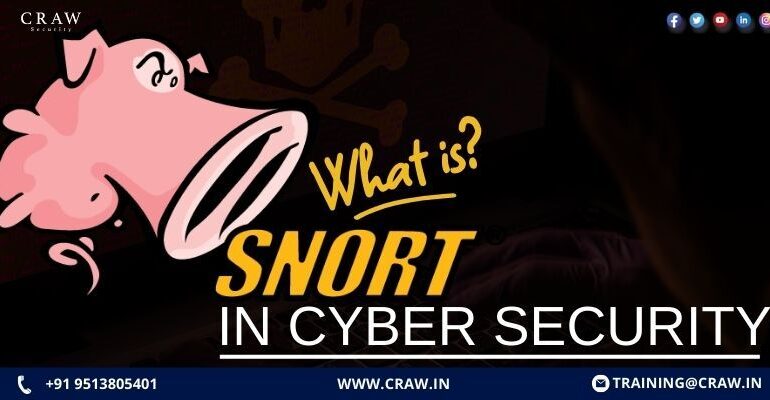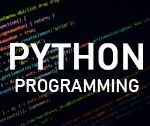What is Snort in Cybersecurity? |

What is Snort in Cybersecurity? |
Introduction to Snort in Cybersecurity
In the dynamic field of cybersecurity, Snort proves to be a reliable barrier against online risks. An open-source intrusion detection and prevention system called Snort is essential to network security because it carefully examines and flags unusual activity.
The article explores the core of Snort, clarifying its importance, capabilities, and effect on protecting digital environments from the ever-present flood of cyberattacks. Come along as we explore the fundamentals of Snort and its vital role in enhancing cybersecurity defenses. Let’s get straight into the topic!
Understanding Snort: A Brief Overview
What is Snort?
An open-source network intrusion detection system (NIDS) with real-time traffic analysis and packet logging capabilities is called Snort. It was created in 1998 by Martin Roesch and is now considered standard in network security monitoring.
The Evolution of Snort
Since its launch in the late 1990s, Snort has evolved dramatically, going from a basic packet sniffer to a powerful and advanced intrusion detection and prevention system (IDPS). Snort was developed by Martin Roesch and was initially released as an open-source project.
It became well-known for its capacity to examine network traffic and identify possible security risks. Its community-driven development throughout the years has resulted in many upgrades, improvements, and flexibility to meet new cybersecurity issues.
Today, Snort continues to change in response to the ever-changing needs of the digital security ecosystem, serving as a tribute to the strength of collaborative innovation.
Key Features of Snort
Real-time Traffic Analysis
Snort monitors network packets with remarkable speed and precision, making it an excellent tool for real-time traffic analysis. Its quick data examination skills enable it to proactively identify and address possible security risks, giving enterprises an essential line of protection against attacks.
Protocol Analysis
Snort can analyze network communications down to the protocol level thanks to its protocol analysis features. Snort’s ability to detect abnormalities or malicious trends by closely examining communication protocols adds to its efficacy in identifying a variety of cyber threats.
Its threat detection skills are improved by this feature, which makes it a more effective and comprehensive tool for cybersecurity experts.
Content Matching
The content-matching feature of Snort includes scanning packet payloads for particular patterns, signatures, or information that may be suggestive of recognized threats. Snort’s ability to utilize flexible rules enhances its responsiveness to various cybersecurity circumstances by enabling users to specify specific content patterns.
The ability to identify harmful payloads is made possible by this granular approach, which enhances the system’s effectiveness in threat detection and prevention.
How Snort Works
- Network Packet Capture
As network packets go across the network under observation, Snort starts to record them. To enable Snort to scan the contents for potential security risks, this includes intercepting and copying data packets. The basis for Snort’s capacity to identify, evaluate, and react to harmful activity is the packet capture procedure.
- Analysis Mechanisms
When doing packet analysis, Snort combines anomaly-based and signature-based detection techniques. Using a database of preconfigured signatures linked to known threats, the contents of packets are compared for signature-based detection.
Anomaly-based detection simultaneously keeps an eye out for departures from predetermined baselines, spotting unusual patterns that can point to new or developing dangers. The combination of these two methods improves Snort’s ability to identify a wide range of security vulnerabilities.
- Alert Generation
Snort creates alerts to inform administrators of suspicious activity when it finds a possible threat. These alerts offer comprehensive details about the threat’s characteristics, along with crucial information like timestamps, source and destination IP addresses, and the particular rule that was triggered.
With the help of this alert generation system, cybersecurity teams may respond to possible security issues quickly and effectively, reducing risks as soon as possible.
Setting Up Snort: A Basic Guide
Installation Requirements
Make sure the host system satisfies the following prerequisites before configuring Snort:
- Operating System: Compatible with Linux, BSD, or Windows.
- libpcap: Required for packet capture.
- pcre: Perl Compatible Regular Expressions library.
- DAQ (Data Acquisition library): Facilitates packet I/O.
- Compiler: A compiler for building Snort from source, such as GCC.
- Memory and Storage: Provide enough resources in accordance with network traffic.
Configuration Steps
- Installation:
- Select the Snort package that is appropriate for your operating system and download it.
- Assemble and set up Snort and its prerequisites.
- Configuration Files:
- Adapt the Snort configuration file (snort.conf) to your particular network settings.
- You can add community rules or make custom rules by adjusting the rules in the configuration file.
- DAQ Configuration:
- Set the packet acquisition mechanism (e.g., pcap) in the Data Acquisition (DAQ) module.
- Configure options like the capture technique and the network interface to watch.
- Rule Management:
- Regularly update and maintain Snort rules to keep up with new threats.
- Create rules that are specific to your network’s security requirements and regulations.
- Logging and Output:
- To select the location of Snort’s log storage, configure the logging settings.
- Select the output plugins that are needed for logging or alerting.
- Start Snort:
- Use the configured settings to launch Snort.
- Ensure smooth operation and keep an eye out for any initialization issues on the console.
- Testing:
- In order to ensure that warnings are issued correctly, inject test traffic into Snort to validate its functionality.
- Adjust configurations in light of test findings and continuing network investigation.
Conclusion
If you want to learn more about the “Snort” Cyber Security Tool, you can search for a reputed and reliable institute that could give an amazing overview of the Cyber Security fundamentals. One of the most reputed institutes in the IT Sector is Craw Security which is offering the “1 Year Diploma Course in Cyber Security Training in Delhi.”
This training and certification program is specially designed and dedicated to IT Aspirants who want to work in the Cyber Security Domain of the IT Sector. Moreover, one will get the support of professional cybersecurity experts working in the IT Sector for years. What are you waiting for? Contact, Now!
Frequently Asked Questions
About What is Snort in Cybersecurity?
- What makes Snort different from other intrusion detection systems?
One of Snort’s unique qualities is that it is open-source, meaning that anybody can alter and expand its features. It stands out in the cybersecurity scene because of its unique blend of signature-based and anomaly-based detection algorithms, which offer a flexible and all-encompassing approach to intrusion detection.
- Can Snort be used in small-scale networks?
Indeed, Snort is a good fit for small-scale networks since it provides strong intrusion detection and prevention features without requiring a lot of resources. It may be adjusted to meet the security requirements of smaller networks because of its scalability and configurable features.
- How does Snort handle encrypted traffic?
Since Snort cannot directly examine encrypted content, it has difficulties when inspecting encrypted traffic. In order to tackle this issue, companies frequently combine Snort with technologies such as SSL/TLS decryption proxies, which enable them to examine the decrypted content and identify any possible security risks.
- What are the common challenges when configuring Snort?
Common challenges when configuring Snort include:
- Rule Tuning,
- Resource Management,
- Updates and Maintenance,
- Integration with Existing Infrastructure, and
- Traffic Normalization.
- How does the open-source nature of Snort benefit users?
The open-source nature of Snort provides users with several key benefits:
- Customization,
- Community Collaboration,
- Transparency,
- Cost-Efficiency, and
- Continuous Improvement.














